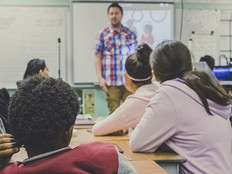Despite widespread efforts to bridge the digital divide through one-to-one device programs, connectivity challenges continue to leave millions of students and teachers trapped in the slow lane of the information superhighway.
DISCOVER: Pandemic aid helps narrow Mississippi's digital divide.
K–12 Schools Still Struggle with Connectivity
Fewer than half of U.S. school districts meet bandwidth goals established by the Federal Communications Commission as part of the 2014 E-Rate Modernization Order. Those goals push school districts to reach bandwidth rates of at least 1 megabit per second, per student. However, according to Connected Nation’s Connect K-12 website:
In 1,508 districts, 5.84 million students were upgraded to bandwidth of 1Mbps per student in 2020.
47%
The percentage of districts nationwide that meet the goal of 1Mbps per student.
Source: Connected Nation, “Connect K-12: 2020 Executive Summary,” November 2020
Students aren’t the only ones affected. Working in partnership with Common Sense, analysts from Boston Consulting Group found that approximately 300,000 to 400,000 public school teachers (8 percent) lack access to adequate connectivity, and 100,000 (3 percent) lack devices.
Common Sense and BCG analysts also estimate that improving access for students will cost at least $6 billion and as much as $11 billion in the first year, along with an additional $1 billion to close the divide for teachers.
Learn how district leaders can work toward digital equity in K–12 education at edtechmag.com/k12/EquityPlan.








